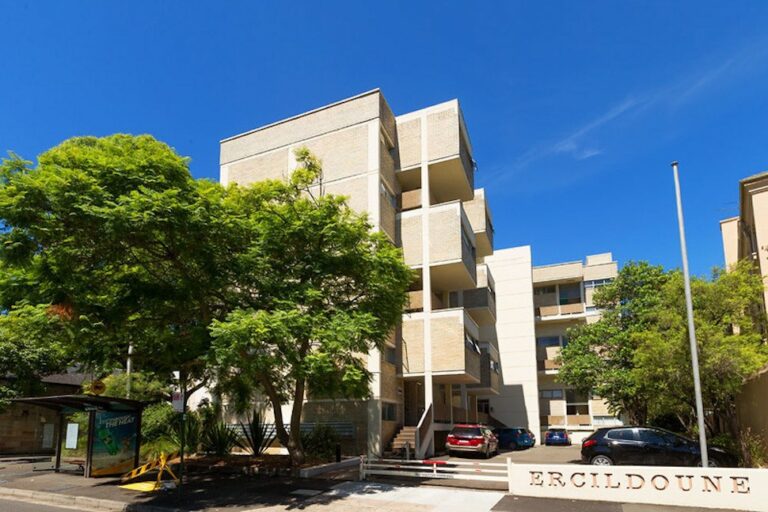A number of beloved Potts Point buildings designed by cult architect Harry Seidler are at risk of demolishment.
As Sydney Morning Herald reports, The City of Sydney does not recognise Sielder’s buildings as heritage, as they’re only 50 to 60 years old.
“At the moment, heritage is the only means we have of recognising qualities of buildings,” architect Philip Thalis told SMH. “And heritage tends to favour older things. The thing with modern buildings is that they’re most at risk right now.”
Two buildings that are at risk of demolishment include the sublime Ithaca Gardens in Elizabeth Bay, built by Siedler in 1960 — where he and his wife Penelope resided. As well as the twin Gemini complex, built Potts Point in 1969.
Among the buildings classified as “detracting” or “intrusive” under the council’s planning rules is Elizabeth Bay’s Ithaca Gardens, built in 1960, where Seidler and his wife Penelope lived before building their home at Killara, and the twin towers Gemini complex, built on 40 Victoria Street, Potts Point in 1969.
The lack of protection afforded to Seidler-designed blocks has intensified a city-wide debate about what constitutes heritage and whether more should be done to preserve Sydney’s modern buildings.
Love Music?
Get your daily dose of metal, rock, indie, pop, and everything else in between.
 View this post on Instagram
View this post on Instagram
Despite being recognised as one of the most important architect’s in Australian history, the work of Harry Seidler is not protected by the NSW government.
“I do think local government planning rules and heritage protections need to change to better value and protect Modernist buildings in Sydney,” Kathlyn Loseby, a former NSW chapter president of the Australian Institute of Architects told SMH.
Other Seidler buildings that aren’t considered heritage, or protected include Rushcutters Bay’s Aquarius block, and Elizabeth Bay’s Ercildoune building — both built in 1966.
A spokesperson for City of Sydney emphasised the council took into consideration buildings of architectural significance, regardless of their age.
“Buildings that are older than 50 years need a heritage impact statement as part of any development application so the City can fully consider a building’s significance and the impact of any proposed development,” the spokeswoman said.

































